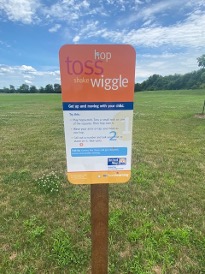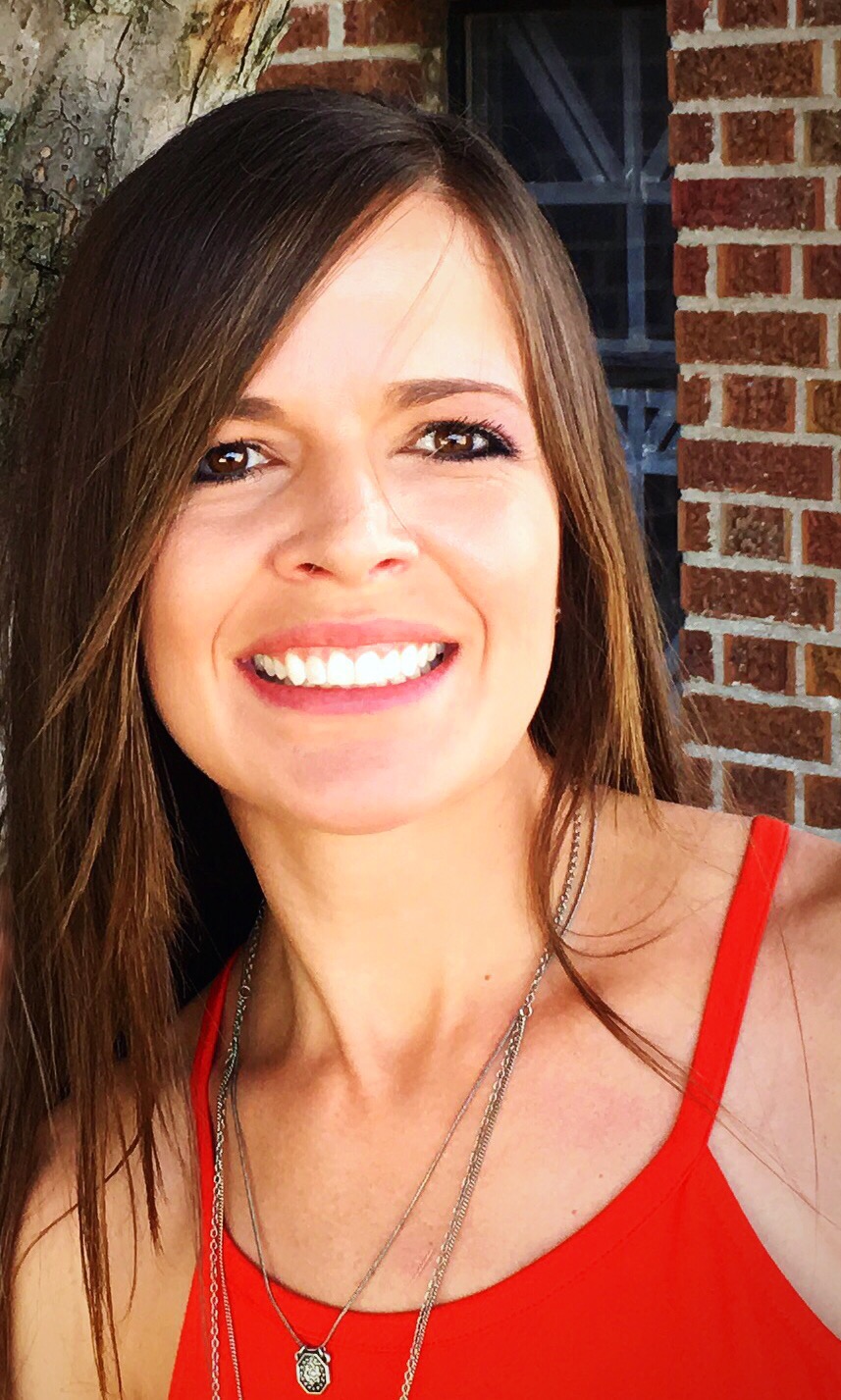Where Play and Learning Meet: The Magic of Learning Landscapes
Posted on May 23, 2025 in Practice

Learning Landscapes(LL) transform everyday spaces like parks and bus stops into playful learning environments that strengthen caregiver-child interactions and support children’s development. By embedding simple, engaging activities into familiar settings, these spaces make learning accessible, joyful, and part of daily life. These everyday environments promote curiosity, problem-solving, spatial reasoning, and observation skills—laying a foundation for later success in science, technology, engineering, and math (STEM) fields.
Children thrive when their play is active, meaningful, joyful, and socially engaging (Hassinger et al., 2018; Hassinger & Fletcher, 2023; Todaro et al., 2022). Supporting playful learning is especially critical for young children with disabilities, providing them a means to express themselves, build essential life skills, and develop meaningful relationships (Pica, 2011; Kessel, 2018). LLs offer an innovative approach to transform everyday spaces into places where rich learning and caregiver-child interaction naturally occur (Hassinger-Das et al., 2018). By embedding playful experiences into public environments, LLs help create accessible opportunities for all children to grow and thrive.
Playful Learning Supports Development Across All Children
Play is not just recreation—it is a powerful tool for learning and growth. Research has consistently shown that active, engaged, and joyful play supports a wide range of developmental skills (Hassinger et al., 2018; Todaro et al., 2022). For children with disabilities, play offers critical opportunities for skill-building, emotional expression, and social connection (Pica, 2011; Kessel, 2018). By advocating for playful environments, we help lay the groundwork for children’s future learning, self-confidence, and relationships.
LLs can also serve as powerful platforms for early STEM learning. For example, hopscotch paths can incorporate number patterns, encouraging children to count forward or backward, skip count, or identify odd and even numbers. Sidewalk games with shapes and measurement prompts can help children compare lengths, identify geometric figures, or estimate distances using footsteps. Weather-themed LL stations might invite children to observe the sky, chart daily conditions, or sort natural materials by texture or weight—introducing basic concepts in science and data collection. Even seemingly simple features, like ramps or rolling objects down inclined surfaces, can spark inquiry about gravity, motion, and cause and effect. These experiences lay the foundation for early mathematical and scientific thinking, especially when guided by caregiver questions such as, “What do you think will happen next?” or “Why did the ball roll faster this time?”
With thoughtful design and inclusive adaptations, LLs ensure that all children, varying in age and ability, can explore, experiment, and build confidence in STEM-related skills while engaging joyfully with the world around them.
LLs Embed Developmental Supports in Natural Settings
LLs are intentionally designed community spaces that embed playful learning into everyday environments like parks, bus stops, and libraries (Hassinger-Das et al., 2018). By placing playful activities in familiar locations, LLs support caregiver-child interactions while keeping a strong focus on developmental outcomes (Guarrella et al., 2022; Saleh et al., 2018). They are thoughtfully constructed to include a wide spectrum of play types—from free exploration to guided play—offering flexibility for a range of developmental needs (Hassinger-Das et al., 2018; Robinson, 2019; Schlesinger & Hirsh-Pasek, 2019). Suggestions for activities and strategies are often provided to help adults guide the experience, making skill-building both easy and natural.
Real-World Examples of LLs in Action
Examples of LLs in practice include the Supermarket Speaks Project (Ridge, 2015), where communication between caregivers and children increased after signs prompting questions and conversations were added to grocery stores. A simple sign like, “Where does milk come from?” opened the door for engaging dialogue between adults and children. Another example is Urban Thinkscape, a project that transformed a city bus stop with interactive elements such as puzzle benches, jumping games, storytelling images, and hidden figures revealed through shadow play depending on the time of day (Hassinger-Das, Palti, et al., 2020). Studies found that families participating in this LL showed improvements in conversational turn-taking and the overall tone of their interactions (Hassinger-Das, Palti, et al., 2020).
Other LL projects have embedded math trails into sidewalks and parks, where children can count steps between landmarks, compare sizes of leaves, or look for patterns in nature and architecture. In one initiative, ramps and ball runs installed on playgrounds allowed children to test hypotheses about speed, friction, and incline—encouraging foundational understanding of physics through play (Sanchez-Baluyut, 2020).
Both traditional and STEM-focused LLs demonstrate that playful learning does not require elaborate equipment—it simply needs intentional design and active caregiver engagement. These real-world examples show how everyday spaces can become inclusive, educational environments that foster curiosity, conversation, and cognitive development for all children.
Conclusion: A Call to Action for Families and Communities
LLs offer a simple yet powerful way to foster growth, connection, and joy between caregivers and children. They demonstrate that developmentally supportive environments can be created with low-cost, accessible strategies—many of which naturally encourage early STEM learning. However, finding LLs in your community might take some exploration. They may be listed under various names (e.g., learning landscapes, inclusive play, adventure play) and are not always widely advertised. When searching for LLs, consider looking for installations that feature STEM-based elements—such as musical playgrounds that explore patterns and sound, garden-based LLs that allow children to observe plant growth and life cycles, or math trails with measurement and counting prompts.
Helpful strategies include:
- Searching online using different key terms, including “STEM playgrounds,” “nature-based learning,” or “interactive math paths”
- Joining local parenting groups, disability networks, or visitor bureaus where families may share hidden gems that include playful learning opportunities
- Exploring nonprofit and recreation organizations that often run or support STEM-based play spaces
- Investigating grant opportunities to fund new LL structures, especially those focused on inclusive STEM learning or outdoor educational opportunities.
Reflective Questions for Families and Educators:
- Where in your everyday life could playful learning naturally fit in —especially opportunities to explore counting, problem-solving, measuring, observing nature, or testing ideas (like speed or balance)?
- How can you adapt a familiar environment (a walk to school, a grocery trip) into a playful, STEM-rich experience—such as counting steps, comparing shapes, predicting weather, sorting items by category, or estimating weights?
- How might your community benefit from creating new LLs that encourage STEM exploration—like ramps for testing motion, number-based hopscotch, or signs that prompt children to observe patterns in nature or solve simple challenges?
By embracing playful learning in public spaces, families and educators can open new pathways for children’s development, curiosity, and joy.
Guarrella, C., Driel, J., & Chorssen, C. (2022). Toward assessment for playful learning in early childhood: Influences on teachers’ science assessment practices. Journal of Research in Science Teaching, 60(3), 608-642. http://doi.org/10.1002/tea.21811
Hassinger-Das, B., Bustamante, A. S., Hirsh-Pasek, K., & Golinkoff, R. M. (2018). Learning Landscapes: Playing the way to learning and engagement in public spaces. Education Sciences: Early Childhood Education, 8(74), 1-21. http://dx.doi.org/10.3390/educsci8020074
Hassinger-Das, B. & Fletcher, K. (2023). The benefits of playful learning: Key insights from research and analysis of playful learning landscapes. Center for Universal Education at The Brookings Institution.
Hassinger-Das, B., Palti, I., Golinkoff, R. M., & Hirsh-Pasek, K. (2020). Urban Thinkscape: Infusing public spaces with STEM conversation and interaction opportunities. Journal of Cognition and Development, 21(1), 125-147.
Kessel, J. (2018). Let our children play: The importance of play in early childhood education. University of Montana Journal of Early Childhood Scholarship and Innovation Practices, 2(1), 1-7.
Pica, R. (2011). Playing and learning in early childhood education: Enhancing creativity, critical thinking, and social skills. Pearson Education.
Ridge, K. E., Weisberg, D. S., Ilgaz, H., Hirsh-Pasek, K. A., & Golinkoff, R. M. (2015). Supermarket speak: Increasing talk among low-socioeconomic status families. Mind, Brain, and Education, 9(3), 127-135.
Robinson, J. P. (2019). Philadelphia playful learning landscapes: Scaling strategies for a playful learning movement. Center for Universal Education at The Brookings Institution. https://search-proquest-com.proxy2.library.illinois.edu/reports/philadelphia-playful-learning-landscapes-scaling/docview/2396830761/se-2?accountid=14553
Saleh, S. F., Latip, N. S. A., & Rahim, A. A. (2018). Assessment of learning with nature in preschool. Planning Malaysia, 16(3), 46-56. https://doi.org/10.21837/pmjournal.v16.i7.499
Sanchez-Baluyut, R. (2020). Explorations of Inclines, Gutters and Ramps in the Twos. Bing Nursery School. https://bingschool.stanford.edu/news/explorations-inclines-gutters-and-ramps-twos
Schlesinger, M. A., & Hirsh-Pasek, K. (2019). Playful learning landscapes: Creating skill-building experiences in community spaces. Childhood Education, 95(4), 3-9.
Todaro, R., Hassinger-Das, B., Zosh, J. M., Lytle, S. R., Golinkoff, R. M., & Hirsh-Pasek, K. (2022). Playful learning landscapes: Promoting literacy through youth engagement and culturally relevant design. Afterschool Matters, 35, 9–16.


